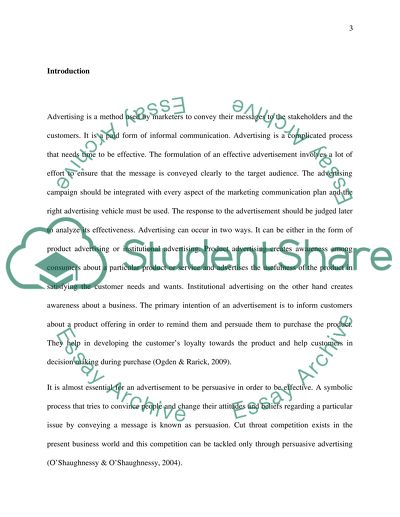Cite this document
(“Advertising can persuade customers to change their attitudes, beliefs Essay”, n.d.)
Advertising can persuade customers to change their attitudes, beliefs Essay. Retrieved from https://studentshare.org/miscellaneous/1574898-advertising-can-persuade-customers-to-change-their-attitudes-beliefs-and-behaviours-citing-examples-of-the-different-ways-in-which-advertising-tries-to-persuade-discuss-the-tactics-used-to-achieve-persuasion
Advertising can persuade customers to change their attitudes, beliefs Essay. Retrieved from https://studentshare.org/miscellaneous/1574898-advertising-can-persuade-customers-to-change-their-attitudes-beliefs-and-behaviours-citing-examples-of-the-different-ways-in-which-advertising-tries-to-persuade-discuss-the-tactics-used-to-achieve-persuasion
(Advertising Can Persuade Customers to Change Their Attitudes, Beliefs Essay)
Advertising Can Persuade Customers to Change Their Attitudes, Beliefs Essay. https://studentshare.org/miscellaneous/1574898-advertising-can-persuade-customers-to-change-their-attitudes-beliefs-and-behaviours-citing-examples-of-the-different-ways-in-which-advertising-tries-to-persuade-discuss-the-tactics-used-to-achieve-persuasion.
Advertising Can Persuade Customers to Change Their Attitudes, Beliefs Essay. https://studentshare.org/miscellaneous/1574898-advertising-can-persuade-customers-to-change-their-attitudes-beliefs-and-behaviours-citing-examples-of-the-different-ways-in-which-advertising-tries-to-persuade-discuss-the-tactics-used-to-achieve-persuasion.
“Advertising Can Persuade Customers to Change Their Attitudes, Beliefs Essay”, n.d. https://studentshare.org/miscellaneous/1574898-advertising-can-persuade-customers-to-change-their-attitudes-beliefs-and-behaviours-citing-examples-of-the-different-ways-in-which-advertising-tries-to-persuade-discuss-the-tactics-used-to-achieve-persuasion.


